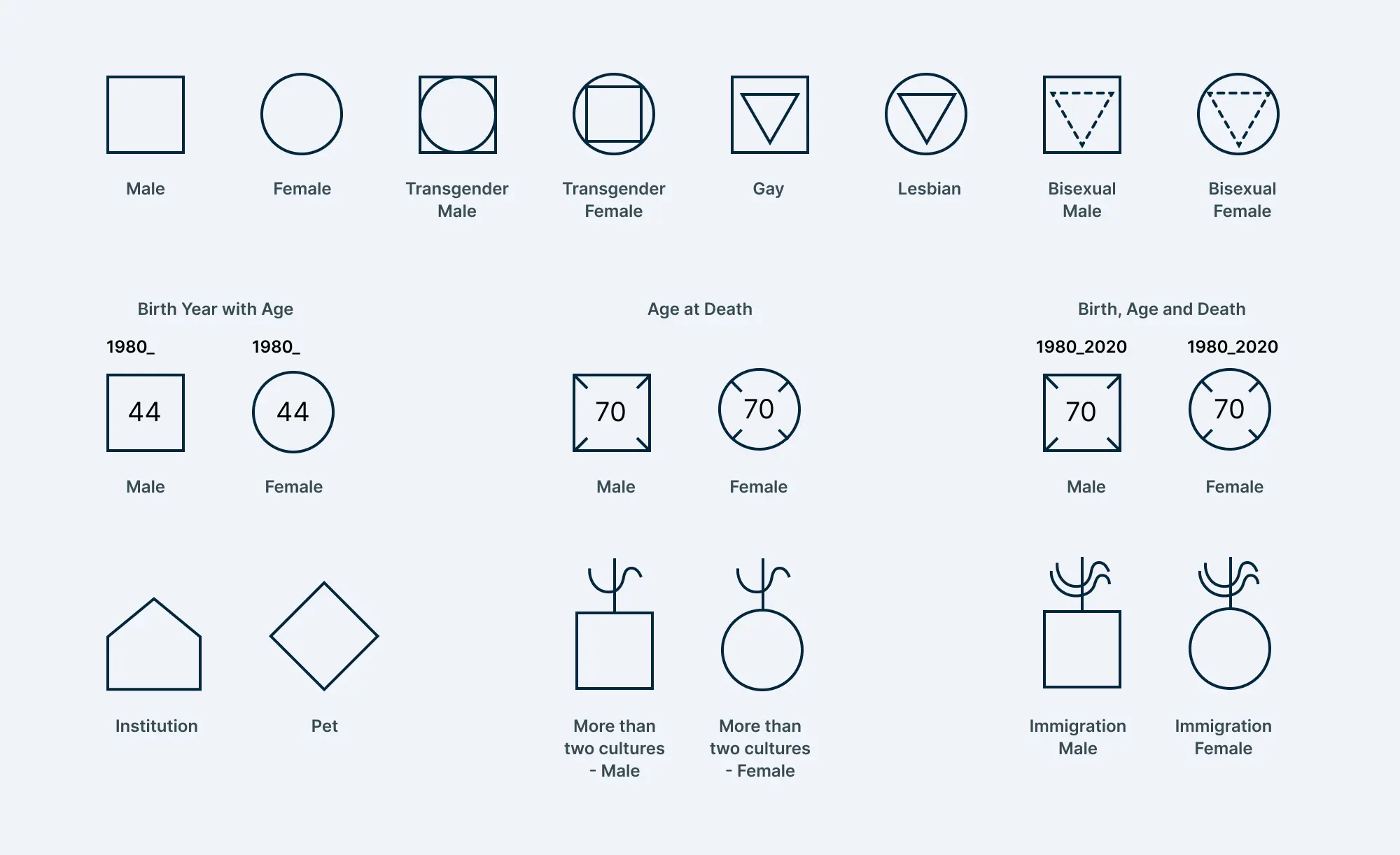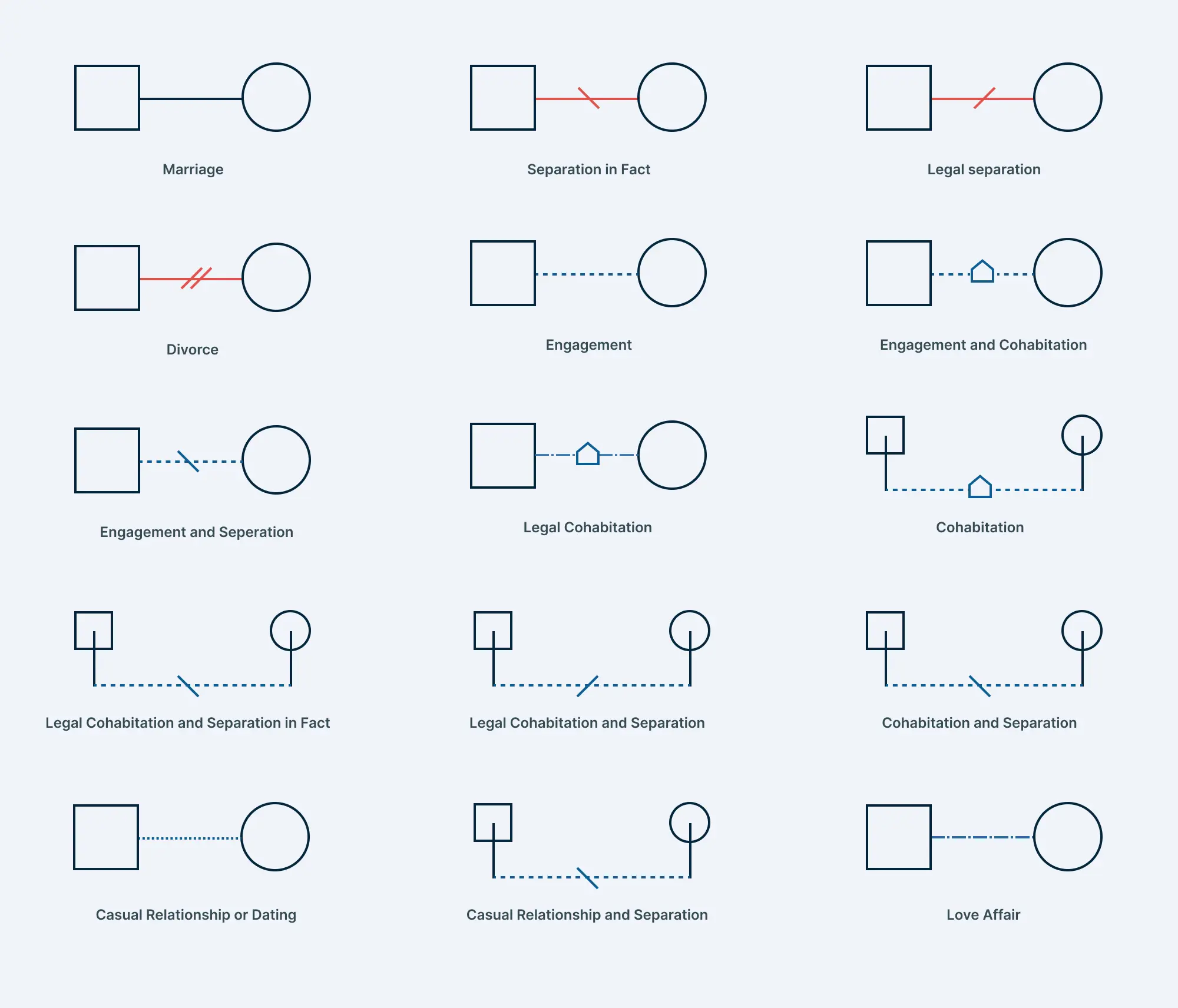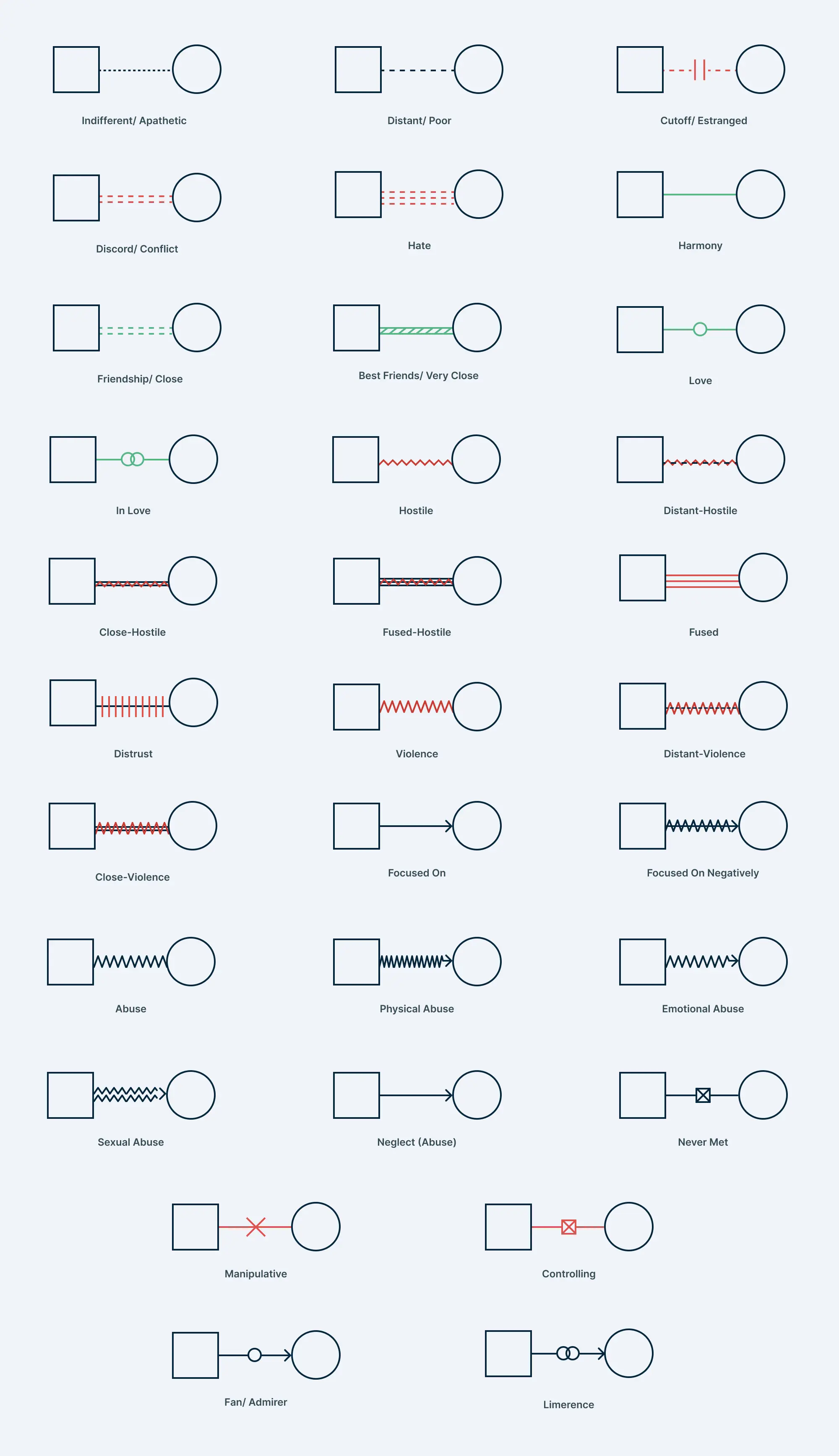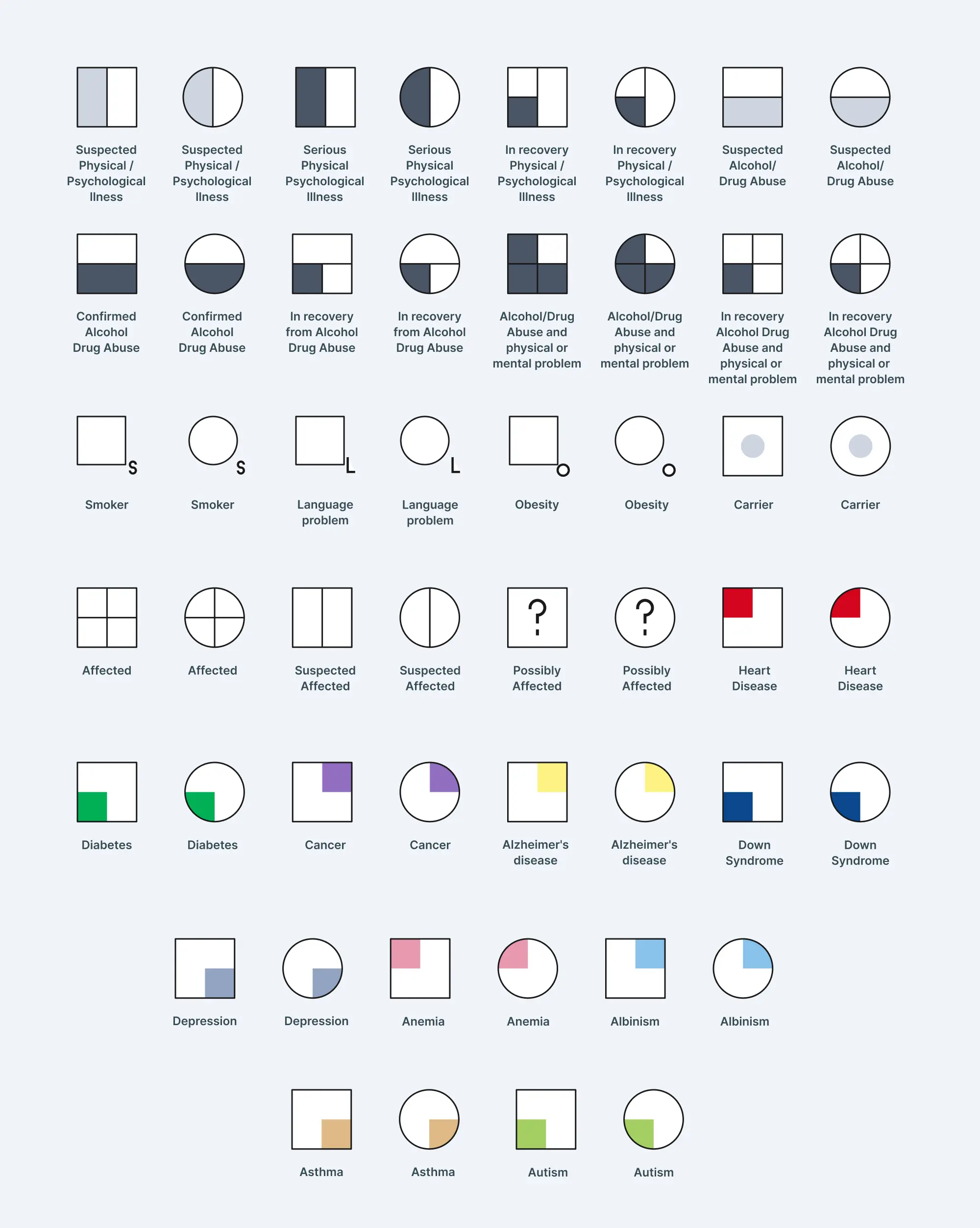If you’re a social worker, a social work genogram is more than a basic family tree; it maps relationships and patterns to guide better support. This comprehensive social work genogram guide highlights how genogram social work enhances understanding and intervention
What is a Genogram in Social Work
A genogram in social work is a visual tool that maps family relationships, emotional connections, and behavior patterns. More than a family tree, it helps social workers understand generational issues, conflicts, and health histories. Genograms use symbols to reveal family dynamics, guiding effective assessment and intervention in social work practice.
Why Genograms Are Really Important in Social Work Practice
Understanding Family History: Genograms help social workers explore family relationships, past experiences, and cultural influences to identify current challenges faced by individuals.
Identifying Family Patterns and Dynamics: They visually uncover generational patterns like addiction, abuse, or mental health issues, enabling a deeper understanding of family dynamics.
Strengthening Intervention Strategies: By analyzing genograms, practitioners can create tailored interventions that align with the family’s unique structure and needs.
Enhancing Client Engagement: Visual representation of family connections makes therapy more collaborative and helps clients better understand their own experiences.
Improving Family Communication: Genograms initiate open discussions, foster safe dialogue, and support stronger relationships within the family unit.
Fostering Empathy and Insight: They help clients reflect on how their family history has shaped their identity, encouraging self-awareness and emotional healing.
Social Work Genogram Symbols
Genograms in social work utilize a standardized set of symbols. The most commonly used genogram social work symbols are,
Basic Genogram Symbols: Males are represented by squares, and females by circles.

Marital Status Relationship Symbols: A solid line connects married couples, while a double slash through the line indicates divorce. Other types of relationships are also represented through genogram symbols.

Emotional Relationship Symbols: Different types of emotional bonds (e.g., close, distant, conflictual) are represented using various dashed or wavy lines.

Genogram Symbols for Medical & Psychological Conditions: Symbols can indicate health issues like depression, addiction, or diseases.

To master these symbols, read our guide on genogram symbols which covers 70+ symbols.
How to Create a Social Work Genogram
Creating a genogram is a crucial part of using it effectively in social work practice. Let’s delve into the process of creating a social work genogram, from gathering information to organizing and presenting it.
Note: When creating a social work genogram, it’s important to approach it with sensitivity, accuracy, and creativity. Respect client confidentiality and ensure you have their consent when collecting and using family information.
Gather Family Information
Interview Clients and Family Members
To create a comprehensive social work genogram, start by interviewing clients and their family members. Engage in open and empathetic conversations, asking about family relationships, significant events, and relevant dynamics. Active listening and building rapport are key in obtaining accurate and meaningful information.
Collect Key Data
During the interviews, collect relevant data such as names, ages, and genders of family members, including extended family. Additionally, inquire about marriages, divorces, adoptions, and other significant relationship details. Gathering information about family health history, cultural background, and any existing challenges or traumas can further enrich the genogram.
Start to Create the Social Work Genogram Now
Choose a Format/Template
Decide on the format or template that suits your needs best. Create a workspace in Creately, and start customizing the way you want. Creately has a dedicated shapes library complete with customizable color themes, text options and much more. Add important notes and information in the notes and data panels, drag drop images or attachments as necessary.
Organize and Display Information
Once you have gathered the necessary information, it’s time to organize and display it in the genogram. Begin by identifying the client or focal person and placing their name at the center of the page or screen. Then, depict family members and their relationships, using standard symbols. Connect family members using lines to represent relationships.
Use Social Work Genogram Symbols and Color Coding
To make the genogram more informative and visually appealing, use symbols and color coding. Color coding can differentiate generations, highlight significant events, or distinguish different branches of the family.
For a more in-depth lesson in making genograms, check our genogram tutorial and learn how to make one in minutes.
Social Work Genogram Examples
Let’s explore a few real world case examples that highlight the effectiveness of genograms in social work practice.
School Setting
In a school setting, genograms help social workers understand a student’s family relationships and background. When a student struggles with school, genograms can show important issues like family conflicts or parents’ divorce. This helps social workers provide the right support based on the student’s family situation. Using genograms makes it easier to understand and help students succeed in their studies. Read our guide about different types of genograms including family relationship genograms that may affect a student.
Work Setting
In a work setting, genograms help understand an employee’s stress, work-life balance, and support system. If someone is struggling at work or feeling burned out, a genogram can show problems at home like caregiving duties or family stress. Knowing this helps create better support and solutions for the employee’s challenges. Using genograms helps improve employee well-being and work performance. Use this list of career genogram examples to learn more about issues that affect the workplace.
Relationship Counseling
In relationship counseling, genograms help understand the history and patterns between partners. When couples face ongoing conflicts, genograms reveal family communication styles and past issues that affect their relationship. This helps counselors identify problems and teach healthier ways to communicate. Using genograms supports couples in building stronger, happier relationships. You can find some useful examples of relationship-related conflicts with this counseling genogram templates list.
Social Work Genogram Templates Made with Creately
The great thing about using Creately for making genograms in social work is the large template library that becomes available to you. Users can browse, select and customize these ready-made templates to make their job easier. Here are some more genogram templates to get started with.
Helpful Resources
Discover everything you need to know about genograms, from what they are, how to create a genogram, to how to understand what they mean.
Explore our collection of genogram templates.
Learn how different types of genograms can help visualize important aspects of life.
FAQs About Genograms in Social Work Practice
What are the ethical considerations that you should be aware of when creating genograms?
Using genograms in social work practice requires ethical considerations to ensure confidentiality, cultural sensitivity, and obtaining consent.
- Confidentiality and Privacy: Respecting client confidentiality is crucial for building trust and maintaining privacy when working with genograms.
- Cultural Sensitivity and Diversity: Being culturally sensitive and aware of diverse family structures and beliefs is important when creating genograms. It promotes inclusivity and avoids stereotypes.
- Consent and Collaboration: Obtaining informed consent from clients and involving them in the genogram process empowers them and ensures their voices are heard.
By upholding these ethical considerations, social workers can responsibly integrate genograms into practice, creating a safe and supportive environment for clients.
What is the difference between a genogram and a family tree?
How can you use Creately to create your social work genogram?
What are the different types of genograms in social work?
In social work, genograms can vary based on the focus of assessment. Common types include:
- Family genograms: To map family relationships and structures
- Emotional relationship genograms: To highlight emotional dynamics like conflict or closeness
- Medical genograms: To track hereditary health issues
- Cultural or social genograms: To explore social identity, roles, and cultural influences
Each genogram social work type helps social workers gain deeper insight into a client’s background and needs.
Resources
Butler, J.F. (2008). The Family Diagram and Genogram: Comparisons and Contrasts. The American Journal of Family Therapy, 36(3), pp.169–180. doi:https://doi.org/10.1080/01926180701291055.
Majhi, G., Reddy, S. and Muralidhar, D. (2018). The use of family genogram in psychiatric social work practice. Open Journal of Psychiatry & Allied Sciences, [online] 9(2), pp.98–102. doi:https://doi.org/10.5958/2394-2061.2018.00034.4.
Rempel, G.R., Neufeld, A. and Kushner, K.E. (2007). Interactive Use of Genograms and Ecomaps in Family Caregiving Research. Journal of Family Nursing, 13(4), pp.403–419. doi:https://doi.org/10.1177/1074840707307917.





